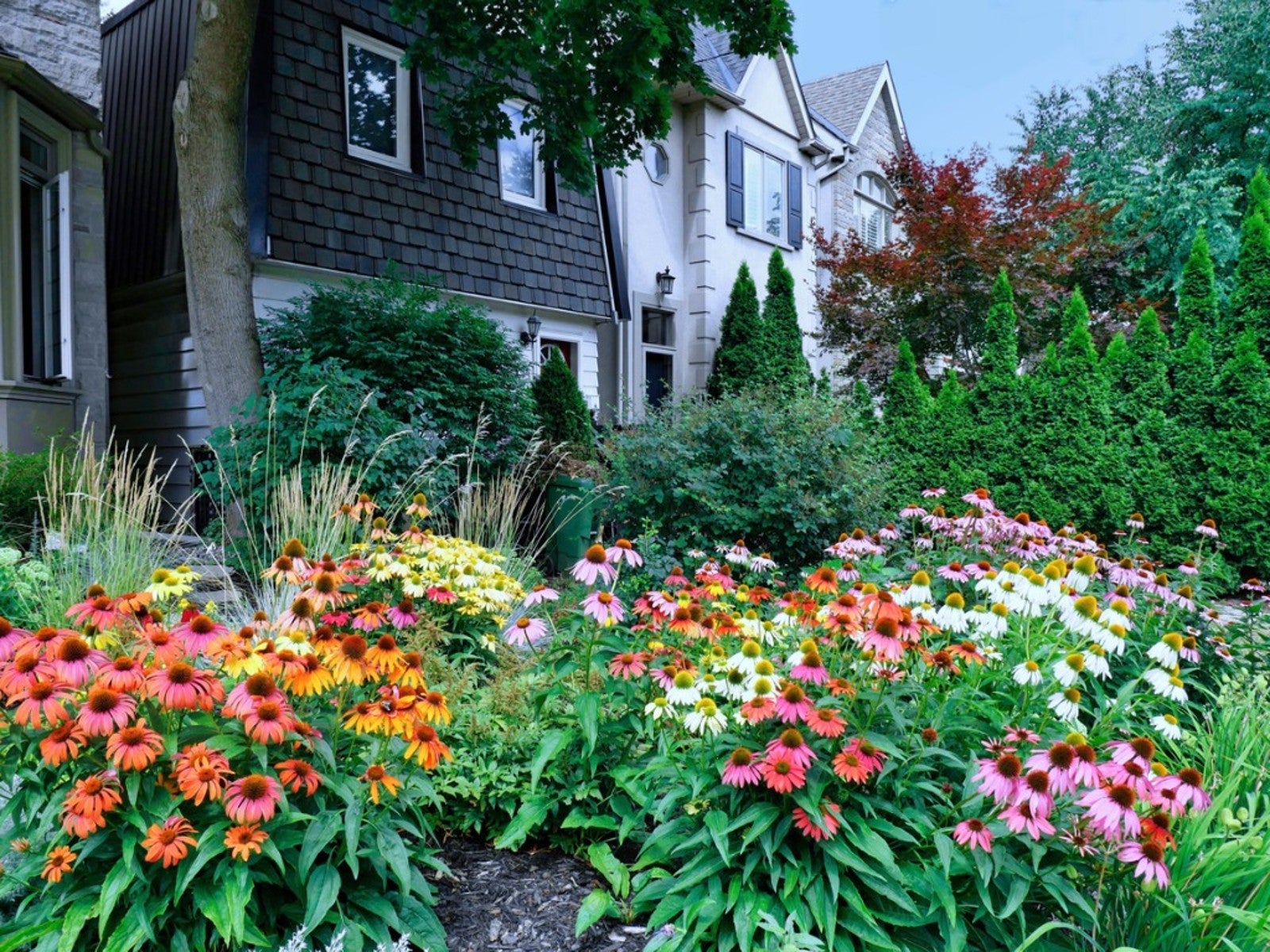
Water is at a premium right now. Drought frequency and length has increased by nearly a third globally since 2000. Lack of irrigation is just one reason many gardeners are looking for lawn alternatives. Native ground cover is one solution but there are also other lawn alternatives for denizens of New England and the surrounding region. Read on to learn about Northeast lawn alternatives.
Why Gardeners Should Try Lawn Alternatives
Water conservation isn’t the only reason a lawn alternative might be a good choice for your landscape. Lawns are high maintenance and often rely on a slew of toxic chemicals which are not only costly but also detrimental to our ecosystem and pollinator population.
Sure it’s nice for the kiddos to have grass to run and play on, not to mention Fido, but there are alternatives available that will combine the comfort of a lawn without the mess, labor, cost and deficit to the environment.
Best Ground Cover for New England
If you are thinking about replacing your turf grass, the first thing that might come to mind is a perennial ground cover. This is for good reason, but before you dive in, take a minute to consider your options. The common ground covers Vinca minor (periwinkle), English ivy, and pachysandra are highly invasive... not to mention rather uninspired. Practically everyone has one or all three of these ground covers.
That doesn’t mean ground covers aren’t a good lawn replacement. They fill in rapidly and need no mowing. Many other types of ground cover have root systems that resist soil erosion, are drought tolerant, evergreen and often have the benefit of blooming. Plus there are ground covers for sun drenched or shaded areas.
Sun loving alternatives to turf include bugleweed and hens and chicks. Shade alternatives include European ginger, Christmas fern and Allegheny spurge. Yes, the latter is a pachysandra, but this variety (P. procumbens) is an extremely hardy, drought tolerant, native plant worthy of a place in the landscape.
Low growing succulents can fit the bill when replacing lawn as well. One such option is Sedum takesimense ‘Atlantis’.
Sign up for the Gardening Know How newsletter today and receive a free copy of our e-book "How to Grow Delicious Tomatoes".
Lawn Alternatives for New England
Another lawn option is white clover (Trifolium repens). Once commonly found in grass seed mixes, white clover, like black medic (Medicago lupulina) and birdsfoot trefoil (Lotus corniculatus) fix nitrogen, which makes them act like a fertilizer. Other options include creeping thyme, ground ivy (G. hederacea), cinquefoil and common blue violet (Viola soraria), which is deer resistant.
If you would rather mimic the look of turf without the hassle of mowing, opt for “No-Mow” grass blends of fine fescue that, once established, require little care. Uncut fescue grows to about 12-15 inches (30-38 cm.) tall in mounds about 6 inches (15 cm.) in height that only need to be mowed four times a year to maintain a 4 inch (10 cm.) height. There are varieties suited for use in sun, shade and various soil conditions.
Other options for a lawn free area are sedges. One lawn alternative is Pennsylvania sedge (Carex pensylvanica). This 10-inch (25 cm) clumping grass is drought tolerant and discourages weeds. Another sedge, Seersucker sedge (Carex plantaginea) has puckered, wavy foliage while Carex laxiculmis (Spreading sedge) has silvery blue leaves.
Since sedges thrive in shade, a sun loving alternative lawn is sprawling Liriope spicata with violet flower spikes in the summer or Liriope muscari, a less aggressive clumping varietal. Both sedge and liriope should be mowed just once at the highest setting in the early spring.
Additional Alternative Lawn Ideas for Northeast Gardeners
A meadow garden comprised of a mix of grasses and perennials is a lovely option to a traditional lawn. Be aware however that these meadows take two to three years to establish. But once they do, they enliven the area with habitat, food and shelter for wildlife and pollinators.
Lastly, to reduce maintenance time, a lawn can simply be made smaller by expanding surrounding beds and adding trees, shrubs, ground covers, and perennial bloomers. With careful thought about your choices you can implement low maintenance, drought tolerant, pollinator friendly and non-invasive species that are sure to please the eye and reduce the necessity for labor, chemicals or irrigation.

Amy Grant has been gardening for 30 years and writing for 15. A professional chef and caterer, Amy's area of expertise is culinary gardening.
